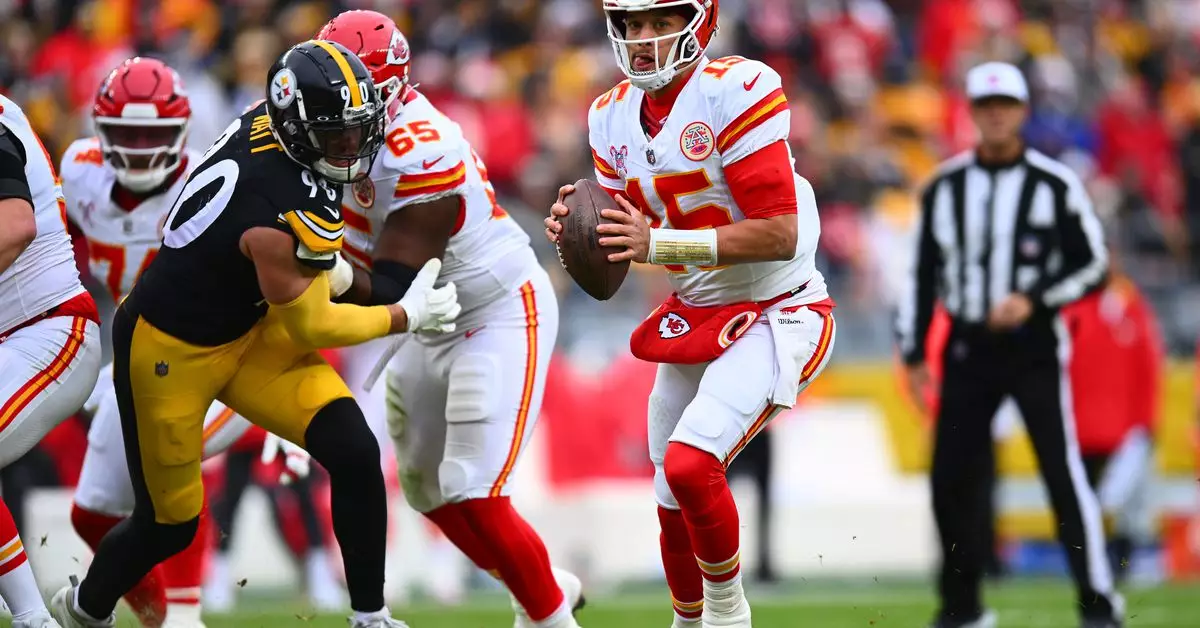In a remarkable display of viewer interest and technological resilience, Netflix has emerged as a pivotal player in the sports broadcasting landscape. This Christmas Day, the streaming giant hosted live NFL games that achieved unprecedented success, making them the most-streamed NFL contests in U.S. history, according to Nielsen ratings. The Kansas City Chiefs and Pittsburgh Steelers game attracted a staggering average minute audience (AMA) of 24.1 million, while the matchup between the Houston Texans and the Baltimore Ravens peaked even higher at 24.3 million. Collectively, these two thrilling matchups captured nearly 65 million viewers, showcasing the tremendous appetite for live sports among streaming audiences.
While Netflix faced challenges during its earlier boxing outing featuring Mike Tyson and Jake Paul—garnering over 60 million households—the platform managed to sustain a robust streaming experience for its NFL debut. Despite these significant obstacles, it is evident that Netflix’s infrastructure held up, providing a satisfactory experience during these high-stakes games, as well as star-studded performances from music legends like Mariah Carey and Beyoncé. The streaming service’s ability to support live events without major disruptions marks an essential step in its evolution, as users grow to depend on the reliability of their platform for real-time entertainment.
The live performance by Beyoncé during the halftime show also made waves, drawing an impressive 27 million viewers at its peak. Recognizing the demand for this unique spectacle, Netflix has announced plans to release a standalone replay of the “Beyoncé Bowl” performance, set to drop soon on their platform. The integration of live sports with high-profile entertainment is a strategic move that not only enhances viewer engagement but positions Netflix as a versatile hub for content that combines athletic prowess with celebrity allure. This blend of sports and entertainment could very well dictate the future of streaming platforms.
Competing for viewer attention on Christmas Day, the NBA reported that its traditional basketball games still managed to pull in admirable numbers, averaging 5.25 million viewers per game, marking the highest viewership on Christmas in five years. This strong performance, reflecting an 84 percent increase from the previous year, illustrates that audiences are still avid for live sports despite the rising influence of streaming services like Netflix. While Netflix’s NFL broadcasts signify a new era for sports viewership, the NBA’s endurance amid competition reflects the complexities of audience preferences and the evolving dynamics of live sports broadcasting.
With the NFL agreeing to keep Christmas Day games exclusively on Netflix for the next two years, it’s clear that the future of live sports is on a trajectory that favors streaming services. As Netflix continues to capitalize on this momentum, the challenge will be to maintain viewer satisfaction while managing the complexities of live broadcast events. The implications of these developments are vast and could redefine how sports are consumed, blending traditional broadcast practices with innovative streaming technology to cater to an increasingly mobile and dynamic audience. As we look ahead, one can only speculate about the next bold moves Netflix will make in an ever-evolving entertainment landscape.

